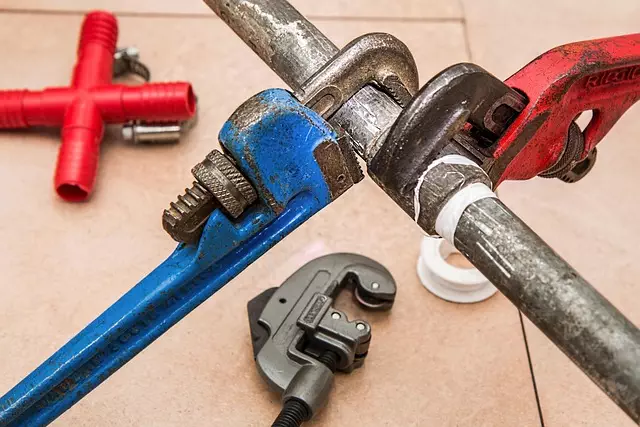This text provides a comprehensive guide to Stem Wall Repair, focusing on identifying and addressing various crack types caused by issues like structural settling or poor construction. It emphasizes proper assessment, tool gathering, material selection (e.g., epoxy injections, hydraulic cements with fiber mesh reinforcement), and a five-step repair process for both homeowners and contractors. The guide also highlights common mistakes to avoid and stresses post-repair maintenance for long-term protection of stem walls.
“Wall cracks, especially in stem walls, can be both structural concerns and aesthetic issues. Understanding the causes and types of these cracks is the first step in effective stem wall repair. This comprehensive guide delves into the heart of the matter, offering a detailed look at preparation, material selection, step-by-step repair processes, common mistakes to avoid, and long-term care tips. By following these guidelines, you’ll master the art of stem wall repair, ensuring both strength and beauty in your space.”
Understanding Wall Cracks: Causes and Types

Wall cracks can be more than just an aesthetic concern; they signal underlying issues that require attention to prevent further damage. Understanding the causes and types of wall cracks is essential for effective stem wall repair. Some common causes include structural settling, earth movement (like earthquakes or expansive clay soils), poor initial construction, or aging and wear over time. These factors can lead to various crack types such as hairline cracks, diagonal cracks, vertical cracks, or large, bulging cracks.
Hairline cracks, typically thin and shallow, are often caused by minor movements and expansions of the building materials. Diagonal cracks, leaning towards one direction, usually result from uneven settling or earth pressure. Vertical cracks are generally indicative of more severe issues like structural damage or foundation problems. Bulging or widening cracks suggest significant structural shifts and may require immediate attention to prevent the wall from collapsing. Identifying the specific type of crack is crucial for selecting the appropriate repair method, focusing on stem wall repair techniques tailored to each case.
Preparation: Assessing the Damage and Gathered Tools

Before starting any stem wall repair, it’s crucial to assess the damage and gather the necessary tools. This initial preparation stage is fundamental as it determines the extent of the repairs needed and ensures a successful outcome. Inspect the crack carefully; note its length, width, and depth. Check for signs of structural compromise or underlying issues like moisture intrusion. Measure and mark the area to be repaired, providing clear guidelines for your work.
For effective stem wall repair, you’ll need specific tools including wire brushes, chisels, a hammer, appropriate fasteners (like screws or bolts), and a high-quality mortar mix. Depending on the crack’s severity, you might also require a level, tape measure, safety gear, and protective clothing. Ensuring you have all these in hand before beginning will streamline the repair process, allowing you to focus on restoring the integrity of your stem wall.
Materials for Stem Wall Repair: Choosing the Right Products

When undertaking stem wall repair, selecting the appropriate materials is paramount for achieving a durable and aesthetically pleasing result. The key to successful repairs lies in understanding the specific needs of your stem wall and choosing products designed to address those requirements.
For instance, high-quality epoxy injections offer exceptional strength and versatility, ideal for repairing larger cracks or structural damage. On the other hand, hydraulic cements are a cost-effective option suitable for smaller cracks and surface repairs. Additionally, fiber mesh reinforcement enhances both tensile strength and adhesion, ensuring long-lasting repair solutions.
Step-by-Step Guide to Fixing Cracks in Stem Walls

Fixing cracks in stem walls is a straightforward process that can significantly enhance the structural integrity and aesthetic appeal of your space. Here’s a step-by-step guide to help you get started with stem wall repair:
1. Inspect and Assess the Damage: Begin by thoroughly inspecting the cracked areas, identifying the extent and pattern of the damage. Stem walls are often susceptible to horizontal or vertical cracks caused by settling, moisture issues, or structural shifts. Note any uneven surfaces or gaps that need attention.
2. Prepare the Surface: Once you’ve identified the problem areas, clean the surface to remove loose debris, dust, or paint chips. Use a wire brush or sandpaper to gently scrub the crack and its surrounding area, ensuring thorough preparation for patching. This step is crucial for achieving a strong bond between the repair material and the stem wall.
3. Choose the Right Patching Compound: Select a high-quality stem wall patching compound suitable for your specific needs. There are various options available, including drywall compound, polymer-based compounds, or those designed for exterior applications. The choice depends on factors like crack size, location, and environmental conditions. Follow the manufacturer’s instructions for mixing and preparing the compound.
4. Fill the Crack: Apply the patching compound to the crack using a putty knife, ensuring it completely fills the gap. Press the compound firmly into the crack, smoothing the surface as you go. For larger cracks, consider using a specialized crack-filling tool for better control and precision. Allow the first coat to dry according to the product guidelines.
5. Sand and Prime: After the initial coating has cured, gently sand the repaired area with fine-grit sandpaper to achieve a smooth finish. Remove any excess compound and ensure the surface is clean. Prime the repair area with a suitable primer designed for stem wall applications to create a strong bond for subsequent coatings.
Common Mistakes to Avoid During the Repair Process

When undertaking wall crack repair, especially stem wall repair, homeowners and contractors alike should be aware of common mistakes to avoid for optimal results. One of the most frequent blunders is failing to address the root cause of the crack. Surface-level repairs might provide temporary solutions, but if the underlying structural issues aren’t addressed, cracks are likely to reoccur. It’s crucial to investigate and fix any foundation problems, moisture intrusion, or settlement issues that could be contributing factors.
Another mistake is using the wrong repair methods or materials for specific crack types. Different walls, whether they’re concrete, brick, or drywall, require tailored approaches. Using an inappropriate epoxy or filling material can lead to unsightly patches and future structural damage. Always match the repair technique and products to the wall’s composition and the extent of the crack.
Maintaining Your Repaired Stem Wall: Long-Term Care Tips

After successfully repairing your stem wall, proper long-term care is essential to prevent future damage and ensure the longevity of your repair. Regular maintenance checks are crucial; inspect the repaired area periodically for any signs of new cracks or moisture seepage. Addressing these issues early can save you from more extensive repairs down the line.
Keep the surface clean and free from debris, as this can attract pests and cause further deterioration. Use suitable sealing products to protect against water damage, especially in areas prone to moisture. Remember, stem wall repair is an investment, so consistent care will help maintain its integrity and keep your living or working space safe and secure.
